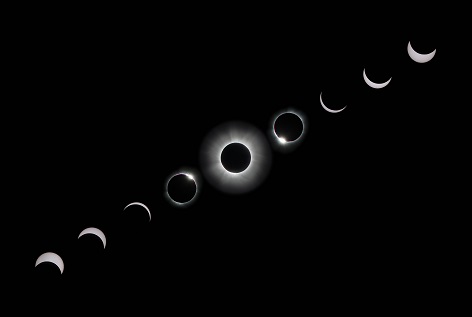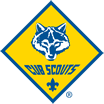Just for Fun!!!
New Jokes for the Month! Month? Quarter maybe? Quarter. Yes, that sounds more like it!
A little April Fools’ Day fun…
Why did the little boy throw an egg at his sister?
-He thought it would be a funny practical yolk!
How do pirates celebrate April Fools’ Day?
-They walk the prank!
If we play tricks on each other on April Fools’ Day (April 1), how can we be sure
that April 1 is really April Fools’ Day? Maybe that’s a trick, too!?!?!
What do you say to someone who gives you a present on April Fools’ Day?
-Prank you, prank you very much!
Why didn’t the ghost’s April Fools’ prank work?
-People saw right through it!
Why shouldn’t you play practical jokes on eggs?
-They might crack up!
And with that,…I am going to eggs-it right out of here!!!
First…NEVER EVER look at the sun without specialized eye protection for solar viewing…
And sunglasses ARE NOT specialized eye protection for solar viewing. Take a look at what NASA says. That said, a total solar eclipse will occur over parts of the US on April 8, 2024. We here in the Clearwater area, or anyone in Florida for that matter, won’t experience the total eclipse. However, we will be treated to a partial eclipse (we can’t lose it all…we are the Sunshine State, after all) with about 65% of coverage. Expect it to start around 1:35PM and reach midpoint around 2:55PM. If you’re really keen about seeing the full eclipse, but can’t travel, NASA has several ways to watch from anywhere. By the way, did I say, ‘NEVER EVER look at the sun without specialized eye protection for solar viewing…and sunglasses ARE NOT specialized eye protection for solar viewing! Ok good, I thought I had, but it bears repeating.
Photo Credit: Rick Fienberg / TravelQuest International / Wilderness Travel

April 8: Well, there is that aforementioned solar eclipse. I suppose it goes without saying where in the sky this will be taking place. As far as the time, school and work may interfere. Forgetful I am…did I say, ‘NEVER EVER look at the sun without specialized eye protection for solar viewing…and sunglasses ARE NOT specialized eye protection for solar viewing! Ok good, I thought I had, but it bears repeating, AGAIN. Hopefully by now that has sunk in; the third time’s the charm, after all.
April 20: Comet Pons-Brooks is expected to reach its brightest for 2024. The bad news is that it won’t be visible from our area. At only 5 magnitude, it will be too low on the horizon. You may want to sit this one out.
April 22-23: The Lyrids Meteor Shower. This shower will typically produce about 20 meteors per hour. So it isn’t a crazy impressive display, but not bad – except this year. The Full Moon officially arrives on the 23rd making observation difficult, so you might want to sit this one out, too.
April 23: And speaking of the Full Moon, today’s the day. This month’s Full Moon is also know as the Pink Moon, the Egg Moon, the Fish Moon – kind of makes you hungry, huh? Remember, it is safe to look at the Moon, unless the Sun is behind it like during a solar eclipse. In which case, NEVER EVER look at the sun without specialized eye protection for solar viewing…and sunglasses ARE NOT specialized eye protection for solar viewing! The third time may be the charm, but once more to be sure won’t hurt.
Skywatching Terms and Fun Facts
Solar eclipses and safety – you knew this one was coming, or should have….NEVER EVER look at the sun without specialized eye protection for solar viewing…and sunglasses ARE NOT specialized eye protection for solar viewing!
Animals and solar eclipses – animals can become confused during a solar eclipse, people too for that matter; birds can stop singing and some might think it’s bedtime. I think it’s at least a good for a nap. Of course, I think anytime is a good time for a nap.
People and solar eclipses – And speaking of people getting confused by solar eclipses, they used to be considered bad omens. Are they? Check out this page for some interesting interpretations of the causes and feared impacts of solar eclipses.
Drop in temperature – if you happen to be in the path of a total eclipse, you may sense a drop in temperature. If only we could get a few of these every July/August. That would be cool. Literally.
Frequency of solar eclipses – You might think they are very rare? But the reality is not so much. They actually occur somewhere on the Earth about every 18 months. The problem is that because the Earth is covered mostly in water, they tend to happen over water or areas where not so many people can see them.
Sky Quiz – Never ever look directly at the sun…
What is an annular eclipse?
Not that you would look to see this, but the Moon and the Sun appear to be the same size in the sky. Why is that?
We have a solar eclipse coming on April 8th. When will the next solar eclipse occur that will be visible in the US?
What is the diamond ring effect during a solar eclipse?
Should one look directly at the sun during a solar eclipse without proper eye protection or can one do so with sunglasses? Ok, we’re not going to make you wait a month/quarter or more for this one. NEVER EVER look at the sun without specialized eye protection for solar viewing…and sunglasses ARE NOT specialized eye protection for solar viewing!
Come back next month for the answers…..
Last month’s questions (a month on Venus maybe):
What is the hottest planet in our solar system? Venus. Surprised? Because of a strong greenhouse effect on the planet, its temperatures will reach 465 degrees C at the surface. Hmm, aren’t humans the reason for greenhouse effects? Must be the pesky Venusians. Or maybe their cows. You know…cows like to…you know…well, let’s just say, cows will be cows.
What is longer, one day on Venus or one year on Venus? In Earth terms, it is their day. Surprised again? Venus rotates slowly and takes 243 Earth days for one full rotation. But it takes Venus only 224.7 Earth days to revolve around the sun!
What is the only planet to orbit the sun on its side, unlike the rest that spin like a top? Need a few hints? It’s the seventh planet from the Sun. It’s the third largest in our solar system. It is bluish-green in color and has faint rings. You got it! It’s Uranus and it rotates at a 90 degree angle from the plane of rotation. So, it appears to be rotating on its side.
Who was the first animal to orbit the Earth? That would be Laika, a dog. She was aboard the Soviet spacecraft Sputnik 2 which launched on November 3, 1957.
What might the rain on Jupiter be made of (according to recent research)? According to some, it might be diamonds. Diamonds?! Wow! Because of the makeup of the gasses in the atmosphere and the pressure they’re subjected to and getting hit by lightning, some have speculated that it might be raining diamonds. That might make Jupiter a girl’s best planet!


